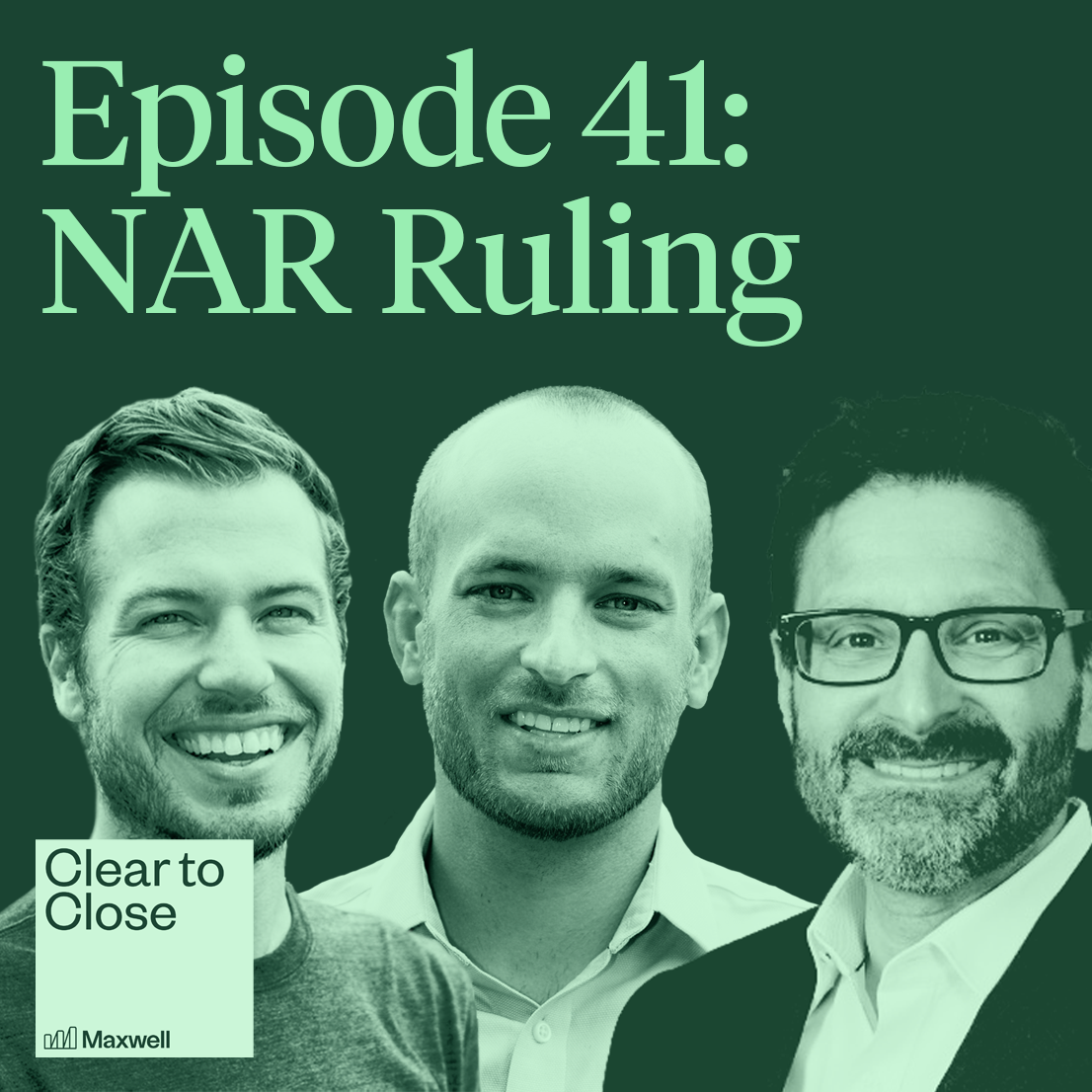New Story: The Innovative Nonprofit Revolutionizing Homeownership Access

The worldwide homelessness crisis affects an estimated 1.6 billion people. While numerous charities build homes for individual families, the lack of scalable systems to solve the root problem remains a constant issue. That’s where New Story seeks to step in.
New Story is a nonprofit company tackling homelessness through innovative and sustainable models. So far, New Story has built 3,380 homes, impacting over 15 thousand people across 4 countries.
On a recent episode of Clear to Close, Maxwell hosts Alan, Bryan, and Anthony talked with Matthew Marshall, co-founder and Chief Impact Officer at New Story. During the conversation, Marshall explained the human-centered design philosophy that empowers the charity’s decision-making processes.
New Story believes that in order to solve the homelessness crisis, innovation is key, especially since the same-old, same-old approach isn’t working at scale. A long-term solution has to involve more than just giving someone keys to a home; it must incorporate elements of safety, generational wealth, community involvement, and more.
The founding story
When co-founder Brett Hagler visited Haiti in 2015, he was struck by how many people lived with only the shelter and safety of a tent—people with a demonstrated work ethic but limited opportunities. Hagler found that there was a local nonprofit there building safe, affordable homes for only $6,000. That was a “lightbulb moment,” when Hagler realized how much impact that resources could have in a place like this.
New Story’s co-founders Marshall, Hagler, and Alexandria Lafci set out to help the nonprofit in Haiti raise more money. They offered things like software, marketing, storytelling, and donor experience tools in an effort to increase the scale of what was already happening on the ground.
Later in 2015, an opportunity with Y Combinator presented itself. The same startup infusion that fueled the likes of Instacart, Stripe, and Airbnb came alongside the New Story team and helped them dream bigger. Soon New Story had the systems, models, and resources in place to start tackling homelessness on a larger community level.
New Story’s goal is to think beyond just the home. The truth is that if people don’t have a safe home where they can get adequate sleep, they have little energy to be productive and move forward in life. Therefore the larger problem is one that involves education, economics, community cohesion and more.
“We need to be focused on solutions and systems that get to the root problem,” Marshall says. That means improving what’s happening underneath the surface, while at the same time reducing the cost of housing to fill immediate needs.
In 2018, they had a huge problem-solving breakthrough. New Story worked alongside a 3D-printed home build in Austin, TX—the first of its kind to be officially permitted. The work with the 3D-printed home aligned well with New Story’s core mission, since it provided cost reduction in a scalable model.
The success allowed New Story to then strategize about ways to take this innovation to an income segment in dire need of it, specifically the homeless population in Latin America. Cost reduction in homebuilding helps to create an in-road to solve underlying problems in the larger process.
The operating model
New Story has found success at the community level by focusing on three subsystems of the market:
- Financial: Make housing finance more accessible, affordable, and attractive to families. Often this involves micro-mortgages.
- Land development: Figure out how to get more land to developers in order to produce more supply. Often this involves community networking.
- Home production innovation: Utilize new innovation to make homebuilding an economy of scale within communities. Often this involves things like 3D printing.
With these three subsystems in mind, New Story is able to pinpoint partnerships at both a local level and at a donor level. Marshall says they are constantly thinking beyond what New Story can do on their own: “How do we prove and demonstrate models that can grow past New Story’s funding and expertise?”
The unique approach
At the core, New Story’s approach is simple: Identify blockers in the market and demonstrate models for scalable solutions.
In practice, that means a lot of problem-solving and partnership-building in the following ways:
- Think beyond one-off home production
- Demonstrate workable projects, business models, and repayment strategies for local partners
- Create unconventional models for credit unions for microfinance institutions
- Grow and scale past New Story’s investments and involvement
“Doing a one-off project here and a one-off home there is highly impactful,” Marshall says. But he and his colleagues believe that a replicable model is the key to tackling the massive issue of homelessness.
For a successful approach, the entire marketplace must be involved—homeowner, land developer, municipality, and financial institution. Therefore, they look for players that are already doing things to scale in a local community. Who has the systems in place to do more than one house at a time? What resources do they need to do even more?
How does New Story identify specific communities in which to work?
New Story begins the process of community development by focusing on land considerations. Their experts look at the complexity of the land, including water positioning, drainage, slope, and more. They investigate the security of the land, including clean titles and land ownership history.
The team also recognizes the importance of social-economic location factors. In order to minimize the disruption to social, spiritual, economic, and educational networks, they focus on land within a 5-mile radius of where families currently live.
Next, they include municipal leaders, local businesses, creditors, and of course, the future homeowner. “We always co-share risk,” Marshall says, adding that it’s important to align the incentives of everyone involved. “How do all sides of the project win?”
Do any of New Story’s processes help inform how we tackle homelessness in the U.S.?
At the moment, New Story is focused on Latin America. In places like Mexico and El Salvador, labor and supply costs are fundamentally different than in the United States. There, it’s not unusual to build a home for $10-$15 thousand, including land, so scalability is easier to achieve there than it is domestically.
Still, New Story’s model proves that U.S. efforts need to focus on innovation if substantial progress is to be made. Marshall says the key is letting go of methods that haven’t worked in the past and utilizing partnerships to create sustainable models and systems.
A lot of the affordable housing crisis perpetuates because of perceived risk. Latin America is based on informal work (no proof of income) so the underwriting process needs to look different there. If U.S. financial institutions were willing to get creative in how they structured loans as well, significant progress might be made.
Specifically, New Story has seen micro-mortgages be a game changer in the Latin American industry. These small loans help build a sense of ownership (rather than being simply “handed keys”). In addition, it sets the family up to build equity and credit-worthiness for the future. Years from now, when that family needs to add on a bedroom or when that owner wants to start a small business, a proven micro-mortgage gives them the credit history to do so.
Marshall says that U.S. financial institutions need to “rethink how things are done fundamentally” in order for progress to be made in the domestic homelessness crisis. “How do we help these financial entities understand who they’re serving rather than just doing the same old lending process? That’s going to exclude a huge market for them.”
Community impact
New Story surveys families upon move-in, then again one and two years later. The results of those surveys show an uplift in income, better sleep, kids thriving with a safe place to study, and more. For example:
- Communities in Mexico have increased their income by 63% since moving into their new homes.
- Across Mexico and El Salvador, more than 300 women have founded their own businesses since moving out of homelessness.
- 100% access to consistent and clean water reduces illnesses significantly. (Prior to moving in, water access was only 14%.)
- Some communities have seen an 80% increase in self-reported safety scores. (Families were asked to assess how safe their family feels in their homes, as well as how safe they feel walking outside at night.)
Get involved with New Story
If you’d like to get involved with New Story’s innovative solutions like its recent project in San Vicente, El Salvador, visit NewStoryCharity.org or reach out to danielle@newstorycharity.org. A hundred percent of donations go directly to labor and materials to build homes for families in need.
At Maxwell, we believe in the life-changing impact of owning a home, and our mission is to help lenders increase access to homeownership. That’s why we donate a portion of our profits to New Story. Learn more about our corporate structure and mission here.


